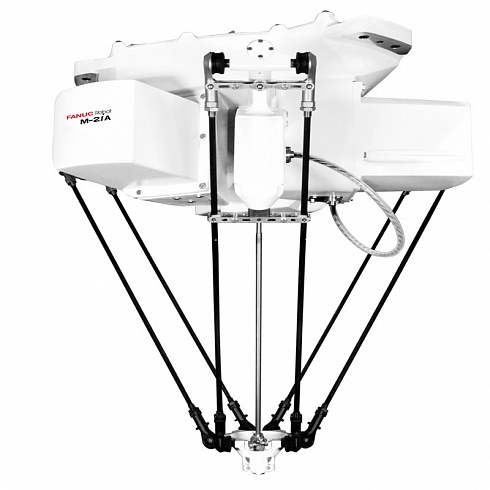Description
Delta robots are another type of industrial robots, invented in the early 1980s by Swiss engineer Reymond Clavel. The main goal of creating this new class of industrial robots was to handle lightweight objects at high speed. In terms of design, delta robots are parallel robots with more than one kinematic chain connecting the base to the end effector. The delta robot is shaped like an inverted Greek letter Delta, which is how it got its name. Sometimes, delta robots are also called spider robots.
Delta robots have three translational and one rotational degree of freedom. The motion of spider robots is based on parallelograms that constrain the movement of the end effector. The base of the delta robot is mounted above the working area, with actuators integrated into the base. These actuators are connected to three composite arms with joints in the middle. Linear or rotary motors are used as the drive mechanisms. A fourth arm, responsible for the rotational degree of freedom, is attached to the center of the base platform. The maximum speed of the delta robot’s end effector can reach up to 10 m/s.
The main area of application for delta robots is the sorting and packaging of small items in the food, medical, pharmaceutical, and electronics industries, where they can perform up to 300 picks per minute. Modern delta robots have a payload capacity ranging from 1 to 12 kg.
Unique six-axis arm with parallel kinematics makes tasks like assembly, dispensing, and soft soldering particularly easy to automate. Thanks to their compact size and multiple mounting options, delta robots can be easily integrated into machines and production lines with limited space. Spider robots can be removed from their stand and directly integrated with a machine. Additionally, delta robots can be equipped with intelligent features such as integrated iRVision, line tracking, and visual line tracking.
Delta robots are available in three-, four-, and six-axis versions, offering short cycle times and exceptional motion precision.

